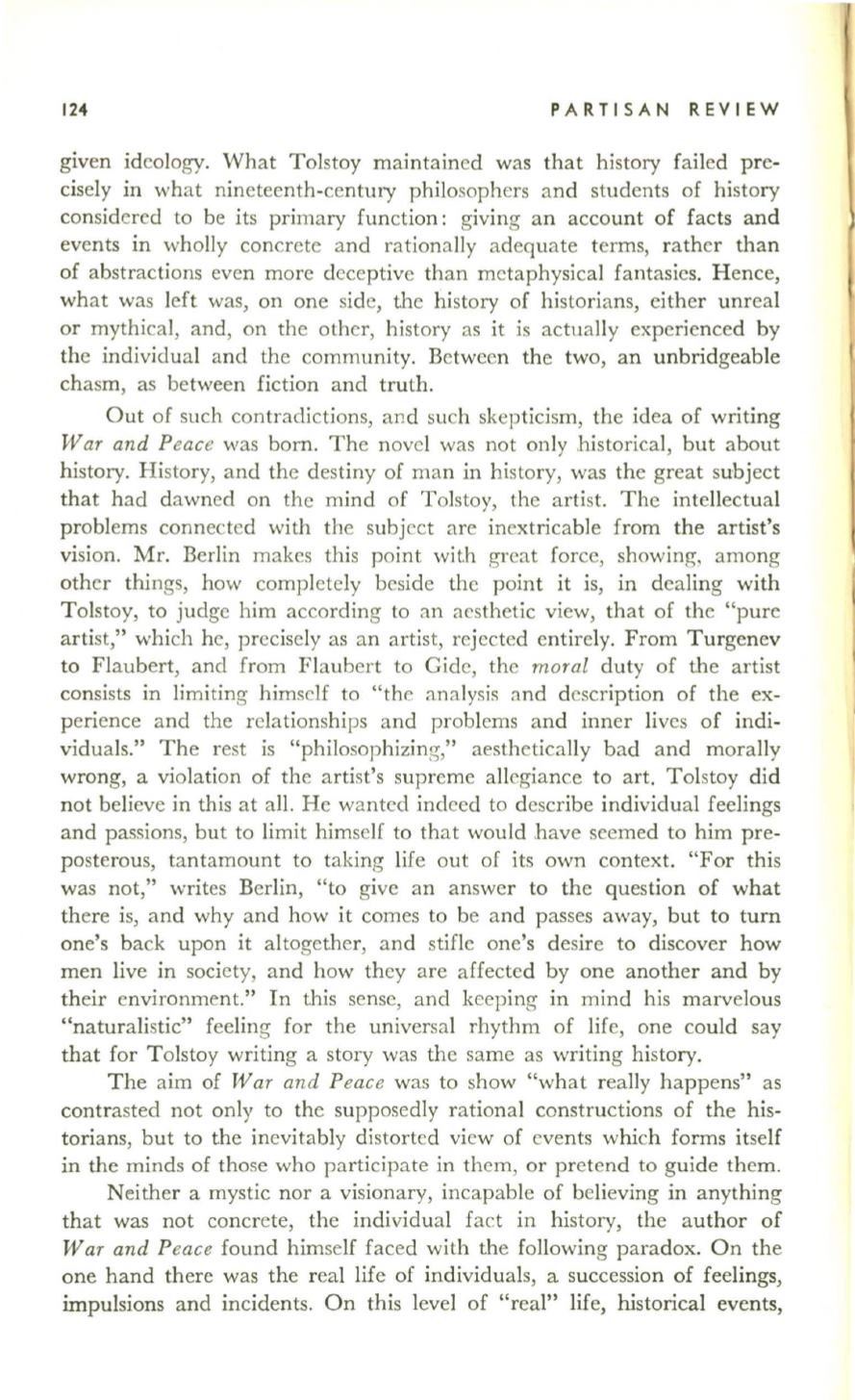
124
PARTISAN REVIEW
given ideology. What Tolstoy maintained was that history failed pre–
cisely in what nineteenth-century philosophers and students of history
considered to be its primary function: giving an account of facts and
events in wholly concrete and rationally adequate terms, rather than
of abstractions even more deceptive than metaphysical fantasies. H ence,
what was left was, on one side, the history of historians, either unreal
or mythical, and, on the other, history as it is actually experienced by
the individual and the community. Between the two, an unbridgeable
chasm, as between fiction and truth.
Out of such contradictions, and such skepticism, the idea of writing
War and Peace
was born. The novel was not only historical, but about
history. History, and the destiny of man in history, was the great subject
that had dawned on the mind of Tolstoy, the artist. The intellectual
problems connected with the subject are inextricable from the artist's
vision. Mr. Berlin makes this point with great force, showing, among
other things, how completely beside the point it is, in dealing with
Tolstoy, to judge him according to an aesthetic view, that of the "pure
artist," which he, precisely as an artist, rejected entirely. From Turgenev
to Flaubert, and from Flaubert to Gide, the
moral
duty of the artist
consists in limiting himself to "the analysis and description of the ex–
perience and the relationships and problems and inner lives of indi–
viduals." The rest is "philosophizing," aesthetically bad and morally
wrong, a violation of the artist's supreme allegiance to art. Tolstoy did
not believe in this at all. He wanted indeed to describe individual feelings
and passions, but to limit himself to that would have seemed to him pre–
posterous, tantamount to taking life out of its own context. "For this
was not," writes Berlin, "to give an answer to the question of what
there is, and why and how it comes to be and passes away, but to tum
one's back upon it altogether, and stifle one's desire to discover how
men live in society, and how they are affected by one another and by
their environment." In this sense, and keeping in mind his marvelous
"naturalistic" feeling for the universal rhythm of life, one could say
that for T olstoy writing a story was the same as writing history.
The aim of
War and Peace
was to show "what really happens" as
contrasted not only to the supposedly rational constructions of the his–
torians, but to the inevitably distorted view of events which forms itself
in the minds of those who participate in them, or pretend to guide them.
Neither a mystic nor a visionary, incapable of believing in anything
that was not concrete, the individual fact in history, the author of
War and Peace
found himself faced with the following paradox. On the
one hand there was the real life of individuals, a succession of feelings,
impulsions and incidents. On this level of "real" life, historical events,


